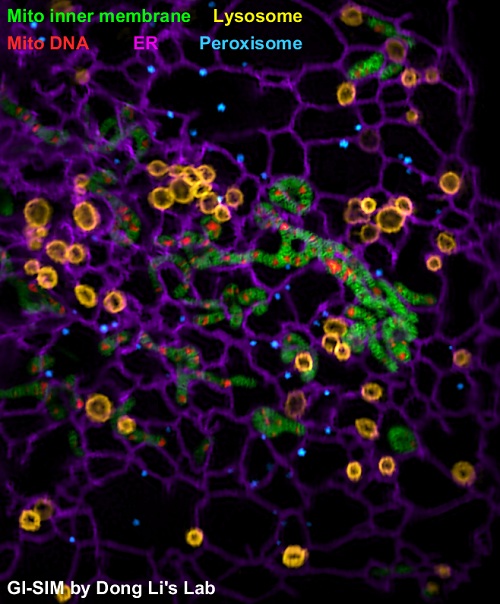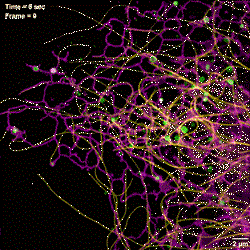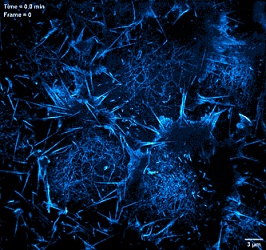Dr. LI Dong's lab develops new super-resolution imaging technique to reveal novel phenomena of organelle interaction
On October 25th, 2018, a Tool Resource article leads by Dr. LI Dong at IBP,entitled "Visualizing intracellular organelle and cytoskeletal interactions at nanoscale resolution on millisecond timescales" was published in Cell. This work developed the Grazing Incidence Structured Illumination Microscopy (GI-SIM), which is capable of high-speed, long-term, super-resolution imaging of dynamic intracellular processes. GI-SIM combines 97 nm resolution at a frame rate of 266 Hz with low rates of photo bleaching and phototoxicity to permit continuous imaging for hundreds to thousands of frames. Compared to our previously developed TIRF-SIM (Li Dong, et al., Science, 2015), GI-SIM probes ~10×further beyond the basal cell membrane and collects ~10×greater fluorescence signal. Compared to spinning disk confocal microscopy, GI-SIM achieves ~2× better spatial resolution and ~10× faster imaging speed. Compared to other super-resolution methods, GI-SIM achieves sub-100 nm resolution over cellular-sized field-of-view at ~100x faster over ~10-100 fold as many frames. In brief, GI-SIM achieves optimal 2D super-resolution imaging of multiple organelle dynamics within cells, which enables uncover a variety of organelle-organelle, organelle-cytoskeleton interactions.

1. We identified three novel mechanisms for generating ER tubules: hitchhiking, dTAC, and de novo budding.
2. We found that some moving late endosomes/lysosomes can bend, and even break, ER tubules. This observation provides a potential mechanism for how the ER can undergo fission, a process that has been minimally investigated.
3. We characterized the association of mitochondrial fusion with ER-mitochondrion contacts, and found that these contactsfacilitate the coalescenceof mitochondrial membranes.
4. We found hitchhiking interactionscommonly occur among different organelles (i.e., one organelle contacts a different motile organelle and is pulled with it), and that this process can remodel both ER and mitochondrial networks.
5. We observed that the tubular ER undergoes ultra-dynamic segregation of its luminal subdomains.
6. We measured the heterogeneity of microtubule dynamic instability at unprecedented spatiotemporal resolution.
7. We found that ER-lysosome contacts play an important role in regulating lysosome positioning and distribution.
Dr. LI Dong and the collaborators of Dr. BETZIG Eric and Dr. LIPPINCOTT-SCHWARTZ Jennifer from Janelia Research Campus, Howard Hughes Medical Institute are co-corresponding authors. GUO Yuting and Dr. LI Di from Dr. LI Dong’s group are the co-first authors, and ZHANG Siwei from Dr. LI Dong’s group is the second author. This work was supported by the National Natural Science Foundation of China (NSFC), the Chinese Ministry of Science and Technology (MOST), Chinese Academy of Sciences (CAS), and Howard Hughes Medical Institute (HHMI).
Article link:https://www.cell.com/cell/fulltext/S0092-8674(18)31308-4


Contact: LI Dong
Institute of Biophysics, Chinese Academy of Sciences
Beijing 100101, China
Email: lidong@ibp.ac.cn

